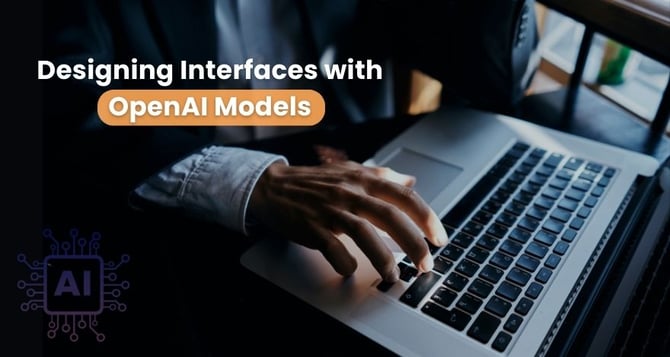AI-Generated UI/UX: Designing Interfaces with OpenAI Models
Explore the synergy of creativity and efficiency in UI/UX design with AI. Discover innovative AI-generated solutions using OpenAI models through Node.js implementation.

In the dynamic realm of user interface (UI) and user experience (UX) design, creativity and efficiency are paramount. Artificial Intelligence (AI) is increasingly becoming a valuable ally in this process, with OpenAI models offering innovative ways to generate UI/UX elements.
In this article, we'll explore the significance of AI-generated UI/UX, highlighting the importance of Generative AI development services, and provide detailed technical implementations using Node.js.
The Role of AI in UI/UX Design
Traditional UI/UX design involves a combination of creativity and user-centric principles. AI brings a new dimension to this field by automating certain design aspects, accelerating the design process, and offering unique and inspiring solutions.
Building an AI-Generated UI/UX System with Node.js
Let's delve into the technical aspects of creating an AI-generated UI/UX system using Node.js. In this example, we'll focus on utilizing OpenAI's GPT-3 model to generate UI design suggestions based on user inputs.
Node.js Implementation
1. Set Up Your Development Environment
Start by setting up your Node.js development environment and installing the required packages.
2. Create an Express Server
Set up an Express.js server to handle requests related to AI-generated UI/UX suggestions.
3. Run Your App
Run your Node.js server using the following command:
Your AI-generated UI/UX system should now be accessible at `http://localhost:3000/generate-ui-suggestion` or the specified port.
Applications of AI-Generated UI/UX
1. Rapid Prototyping: Quickly generate design prototypes for initial concepts.
2. Diverse Design Exploration: Explore various design possibilities based on user inputs.
3. Content Creation: Generate placeholder content and layout suggestions for websites and applications.
4. Personalized User Interfaces: Tailor UI designs based on specific user preferences or industries.
Considerations and Best Practices
1. Human Oversight: While AI can provide suggestions, human designers should review and refine generated designs.
2. Ethical Design: Ensure that generated designs adhere to ethical guidelines and do not promote harmful content.
3. User Feedback: Incorporate user feedback to improve the accuracy and relevance of AI-generated designs.
4. Integration with Design Tools: Explore ways to integrate AI-generated designs seamlessly into popular design tools.
5. Legal and Copyright Compliance: Be mindful of copyright and licensing considerations when using AI-generated content.
Conclusion
AI-generated UI/UX is a powerful tool that complements the creative process of designers, offering inspiration and accelerating the design workflow.
Empower Your Business with Cutting-Edge AI Solutions
Experience the next level of innovation! Our experts can build custom AI solutions for your unique business needs.
By leveraging Node.js and integrating OpenAI models, developers can incorporate AI-generated UI/UX suggestions into their projects, fostering a balance between human creativity and machine-driven efficiency.
As AI continues to advance, the collaboration between designers and AI in UI/UX design will likely play a pivotal role in shaping the digital experiences of the future.


%201-1.webp)


.png?width=344&height=101&name=Mask%20group%20(5).png)






.png?width=352&name=AI-Enhanced%20VR%20(1).png)









